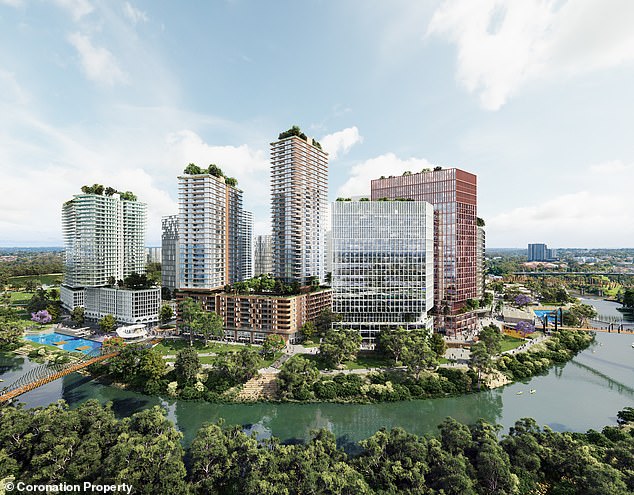A massive new construction project in a Sydney suburb will build 11,000 new homes in an area the size of eight Melbourne cricket stadiums.
The Moore Point development in Liverpool, in the south-west of the city, is a step closer to being given the green light after it was finally released to public consultation following almost a decade of red tape.
The project will turn a former industrial area along the Georges River into a mini “river city” and its dense, imposing development will provide a model for how the country might solve its severe housing shortage.
Residents will be able to buy their own slice of heaven in one of several glass apartment blocks on the 32-hectare site which will also include shopping malls, restaurants, cafes and bars, plus parks and a purpose-built school for 1,000 students.
For comparison, the area of land on which the MCG stands, including the playing field, stadium and grounds, is 4.05 hectares.
Moore Point will see the removal of backyards and garages in favour of balconies, for those who can afford them, and public transport via a pedestrian walkway over the river to Liverpool city centre and the train station.
This new development and others like it could help the Australian government meet its goal of building an additional 1.2 million homes by July 2029 to address the country’s housing shortage and skyrocketing property prices.
Building homes where they are needed and quickly is a major concern; the latest forecasts from the Association of Master Builders show that all states and territories are on track to miss the National Housing Deal targets, with a total shortfall of around 166,000 properties.
The Moore Point development in Liverpool, south-west of Sydney, will house 11,000 new homes in half a dozen towering apartment blocks.
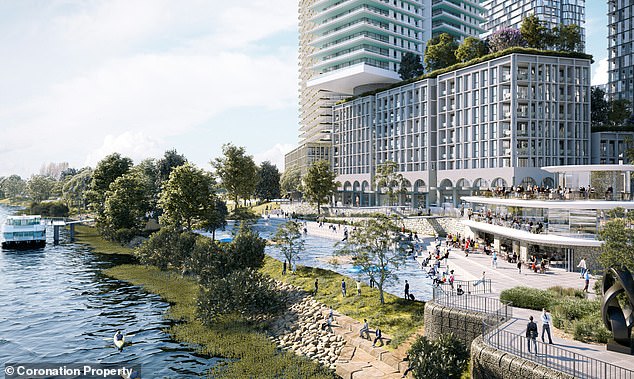
The new ‘river city’ goes to public consultation for its rezoning after years of delays
Former New South Wales Premier Dominic Perrottet said Moore Point could be the “Barangaroo of the west”, referring to the major waterfront development in Sydney’s central business centre just north of Darling Harbour.
In March this year, Moore Point developer Coronation Property wrote to new Premier Chris Minns and threatened to abandon the project after it had been held up for years due to flooding concerns despite no previous major flooding having been recorded at the site.
A new set of flood studies ordered by the Planning Department, which would take another 18 months to complete, prompted the letter, published in The Daily Telegraph.
“The current situation is no longer sustainable and requires certainty from the government immediately,” Coronation wrote.
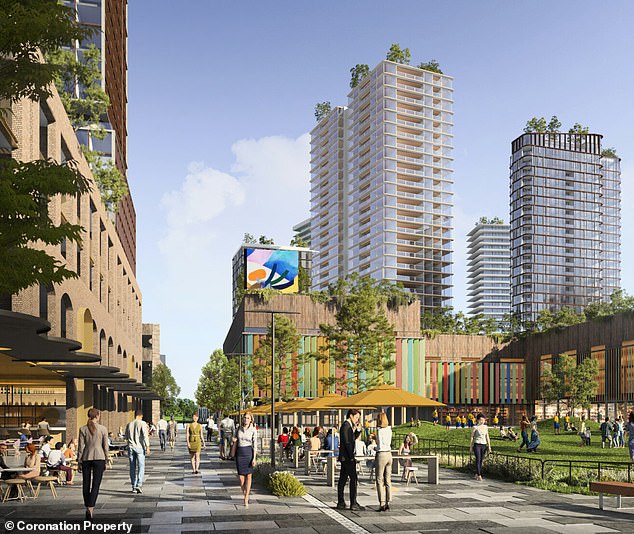
New South Wales Premier Chris Minns said Sydney needs to “develop” to provide housing rather than create more urban sprawl
The project is currently in the rezoning phase.
If approved, planning approval and building approval would still be required for each stage of the project.
Coronation has pledged around 400 of the 11,000 homes as affordable housing for frontline workers.
Coronation CEO Joe Nahas said he was excited that after so much time, the project was moving forward.
“We are delighted that after so much hard work on the project, including years of extensive consultation with our key stakeholders and the community, we have moved to the next step of the planning process,” Nahas said.
‘We are proud that Moore Point is the jewel in the crown of south-west Sydney and is set to deliver 11,000 new quality homes in an area where a severe housing shortage is failing to meet the growing needs of the community.’
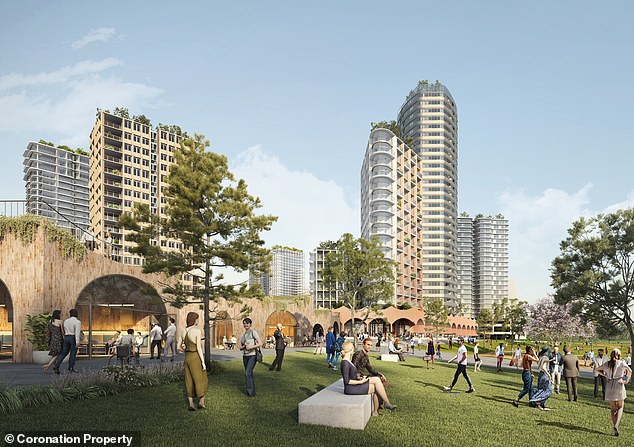
Sydney’s population is expected to reach 6.4 million by 2041, with an additional half million homes needed.
Between 1991 and 2021, the number of people living in Sydney units more than doubled, with 30 per cent of all Australians now calling apartment blocks home.
Where once there might have been a three-bedroom house on 1,000 square metres, developers will offer a tower of 30 40-square-metre studio apartments worth more than $500,000, barely larger than a motel room.
And that’s despite the surge in new housing developments appearing on the outskirts of the city, in suburbs such as Schofields in the west, Quakers Hill in the north-west and nearby Campbelltown in the south-west.
Sydney’s property market is undergoing a radical revolution that is linked to the construction of housing along the city’s main transport routes.
Conventional houses and old low-rise apartment blocks are giving way to high-density developments springing up on the main arteries heading north, west and south.
“We need to move forward,” New South Wales Premier Chris Minns said earlier, backing the construction of large new developments along the city’s transport links.
“Sydney cannot grow by adding another street to the western fringe of the city every two weeks. The best way… is to have buildings that are built over time.”
Many of them have been built overlooking the new metro station that has just opened at Crows Nest. They are also located on the main bus routes that run along the Pacific Highway.
Their position is to ensure that residents can leave home and be at work within 15 minutes.
Video editor Jake Horne, 32, has no regrets about swapping his garden home in Gosford on the Central Coast for a much smaller apartment on Sydney’s north shore.

Video editor Jake Horne, 32, has no regrets about leaving his garden home in Gosford on the Central Coast for a much smaller apartment on the city’s north shore.
“The commute to work was horrible,” she told Daily Mail Australia as she relaxed in the leafy playground built directly over the railway line at the 88 Christie St development in St Leonards.
“I was just fed up with that long journey.”
“It would be nice to have a bigger apartment at some point. I’ve been in my house for four years and it’s already worth $150,000 more than what I paid for it, which is ridiculous, really.”
He said old ideas about apartment blocks were being transformed by new architecturally inspired designs.
Pointing to the St Leonards development, he added: ‘These look much better than some of the silos you see in older developments.
The story is similar along the city’s main arterial roads, in places such as Mascot, Stanmore and Carlingford, with high-density apartment blocks lining key routes and train lines serving the city’s multiple CBDs.
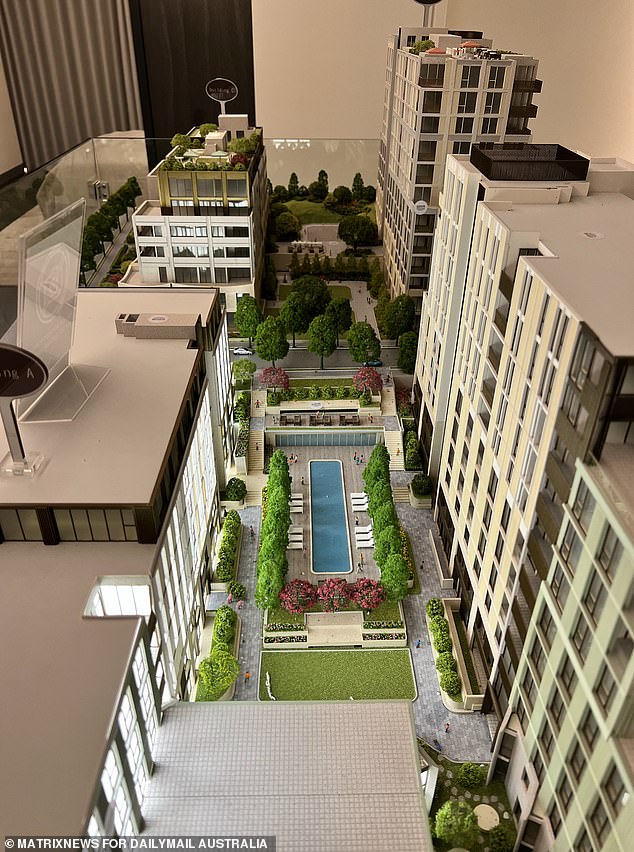
Developments like these (pictured is another Sydney project in St Leonards) are a high-level model for Sydney’s future under a 15-minute city philosophy.
And the biggest of all is Sydney’s revamped western capital, Parramatta, which is barely recognisable from what it was just 25 years ago.
Mother-of-two Jo Main, 32, is a big fan of the children’s play park at the St Leonards block complex but lives in a terraced house in nearby Crows Nest.
“We have two kids and are very outdoorsy so I don’t think we have enough space to store our gear,” she told Daily Mail Australia.
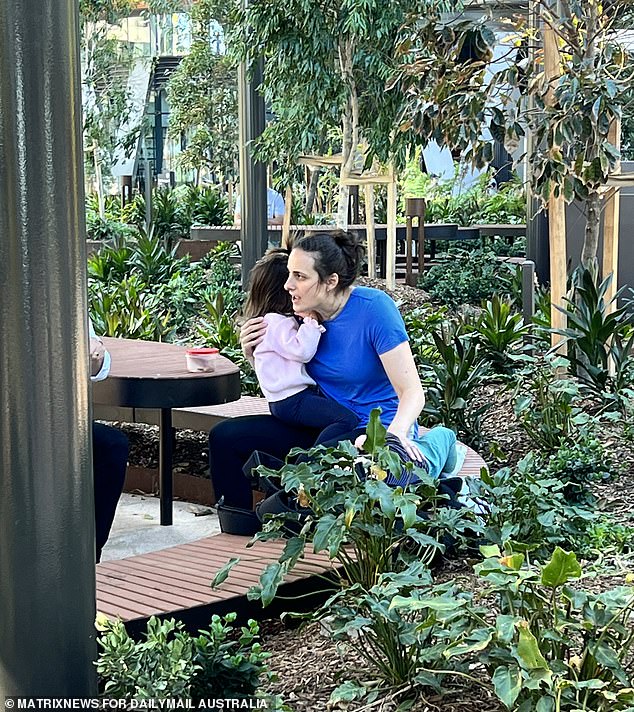
Mum-of-two Jo Main, 32, (pictured), is a big fan of the children’s play park at her St Leonards development unit.
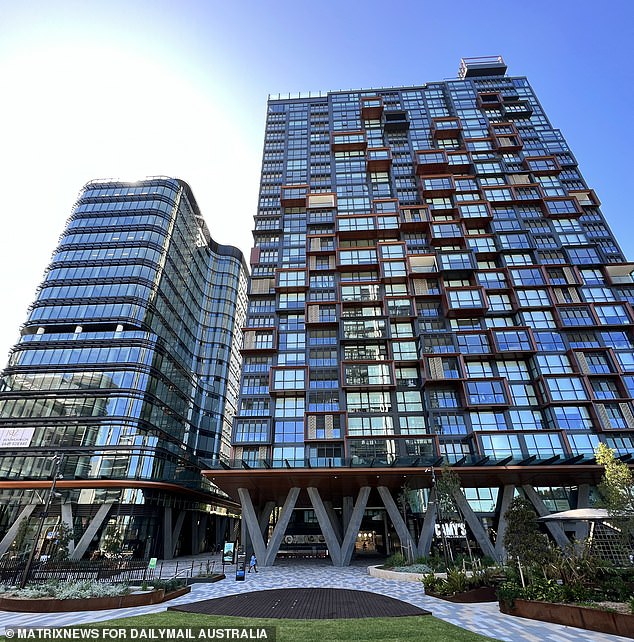
The new tower blocks, up to 47 storeys high, around St Leonards on Sydney’s north shore are vertical villages, with supermarkets, medical centres and even libraries built into their design.
‘Six years ago, many apartments only offered a storage cage in the parking space, but that’s not suitable for storing baby strollers.
‘Even getting strollers through a door or into an elevator can be a nightmare.’
But she added: ‘I love living in an apartment – I used to live in one before and I loved not having to worry about chores like gardening or maintenance.
“We discovered the St Leonards complex last week and saw the shopping centre underneath and it’s incredible. It’s impressive.
‘It’s great because a lot of people need to live close to work, and for those who work in the city, it offers a bit of everything within easy reach.
‘It’s fantastic, especially for people with children living in one of these apartments, to have this exceptional playground.
‘But I am concerned that high-density apartments could overwhelm local facilities that were not designed for so many people, unless everything else is scaled up to meet the need.
“There are pros and cons. The value of our property has certainly increased a lot because there are fewer houses in the area now and the demand is higher.”

